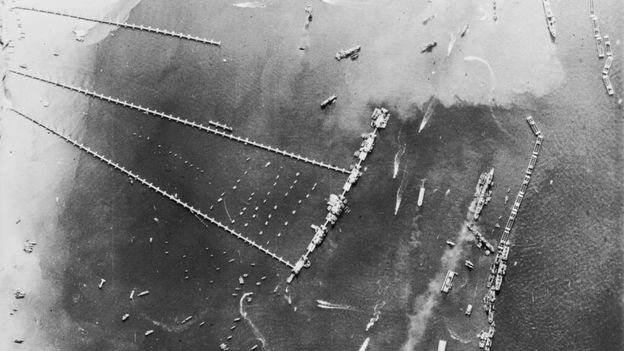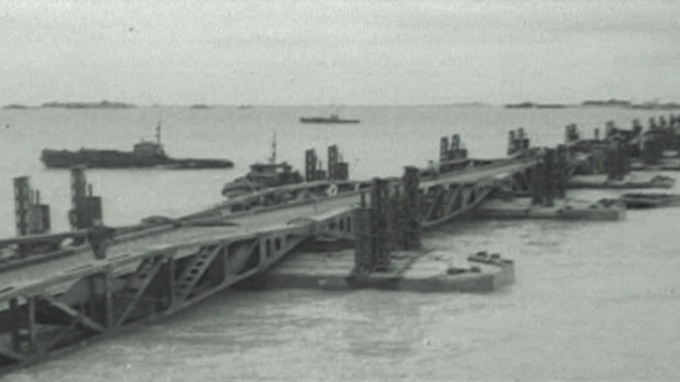One of Allan Beckett’s innovative Mulberry Harbour Whale bridge span units has been installed at IWM Duxford. The prominent location is alongside the building containing a vast array of second world war heritage equipment, including many other large and small relics from the D-Day landings. The inauguration ceremony was attended by many of the Beckett family and a large number of interested well wishers.
The only example of the ‘Whale Bridge’ floating roadway section in the UK has finally been recovered. The Whale Bridge was part of an artificial harbour with huge floating road bridges which was used to rapidly offload cargo and soldiers during the critical Normandy invasion phase of WW2. For five months following D-Day (6 June 1944), they landed two million men, 500,000 vehicles and four million tonnes of supplies. Thus it was crucial to the success of the Allies in breaking out from the beaches of Normandy and is widely considered to be one of the greatest engineering feature of World War Two. The floating ports were called Mulberry harbours, while the flexible roadways linking them to the beaches were codenamed Whales.

It was designed by Allan Beckett who was a young officer in the Royal Engineers during the war. The project began with Lt-Col WT Everall almost insisting Beckett to design ‘piers for flat beaches’. The bridge had to float up and down with the tides which led to a major problem in his designs. However he was inspired by the mechanism of a kite which uses uplift force in order to rise up. He applied the same principal to the bridge surface which would maximise its buoyancy. Therefore he began his work by making a tin-plate model of his proposed floating roadway, consisting of a lozenge-shaped bridge span and part of an adjacent span to show how the junctions could be made using spherical bearings. When Everall returned from the War Office, he was exultant. The prototype bridge spans were tested at Cairn Head in Scotland. Despite his rivalries, only Beckett’s bridge remained intact and fully workable. After the testing, it was not difficult for the Chiefs of Staff to make a choice. The project successfully ended with his outstanding contribution to the Mulberry operation.


Tim beckett and Gordon Rankine at IWM Duxford for the handing over of the Mulberry harbour Whale bridge span.


